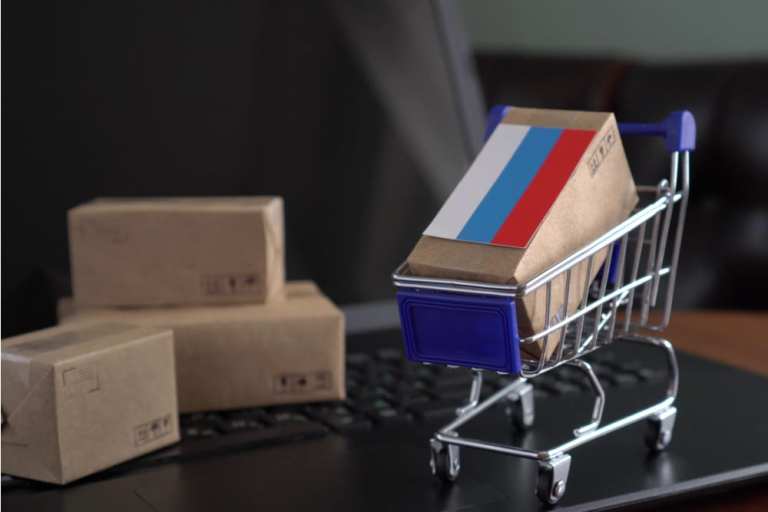
For eCommerce firms targeting emerging markets, the opportunities are vast, as millions of consumers continue to go online to buy, and eCommerce sales soar by double-digit percentages.
But in markets such as Russia, complexity reigns, and merchants must grapple with data storage laws, unfamiliar payment rails and the payment preferences of their targeted end users. Get it right, and top lines get a boost. Get it wrong, and money and time are, ultimately, wasted.
To that end, in an interview with PYMNTS, Mike Goodenough, general manager of EMEA at Ingenico ePayments, said merchants can demystify the cross-border adventure into Russia through Ingenico’s local solution that can streamline transaction processing.
To get some perspective on Russia’s emergence as an eCommerce powerhouse, eCommerce sales in Russia were worth more than 28 billion euros last year — and eCommerce sales growth tops 17 percent annually. Goodenough said that since 2014, more than 30 million “very active” consumers have brought their buying power online. That buying power has been seen, especially in verticals such as travel, luxury goods and gaming.
But to tap into that potential, eCommerce firms, global though they may be, must address new markets with a local mindset.
Against that backdrop, Ingenico said last year that it had launched domestic processing and cross-border settlement for international payments.
Goodenough said the decision to bring such services to eCommerce firms eager to gain entrance into Russia makes sense as Ingenico has sought to expand into markets with high potential, such as Latin America, India and China.
“We could see the potential from the perspective of some of the merchants that we already work with, and we could see that they were targeting consumers in Russia — but were not really targeting them in an effective way,” he told PYMNTS.
Among the challenges international merchants face, equating to barriers to entry, said Goodenough: These eCommerce firms had been, and are, using international rails and payment methods that are not tailored to Russia, where online marketplaces are seeing a growing embrace across verticals, and fulfillment infrastructure is reaching a level of maturity.
Along with what he termed a “mobile first” mindset in the country, more than two-thirds of customers are buying goods that are delivered from outside Russia.
In terms of preferred payment methods, cards continue to be favored over other methods, and Goodenough said that Mir, which is a national payment system established by Russia two years ago, has roughly 50 million cards in circulation, a tally that could reach 80 million in the next few years, indicating growing competition for the likes of Visa and Mastercard.
Traditionally, merchants have authorized domestic Russian cards internationally, with acquirers located outside Russia, and through Visa’s and Mastercard’s networks. Goodenough told PYMNTS that authorization rates have been lower than transactions processed domestically.
“If the merchants are asking the consumers to pay for Russian goods in U.S. dollars, that will also add to the ‘failure’ rate they’ll see,” he added.
With a nod toward the Mir cards, he said trying to authorize those cards with non-Russian acquirers will lead to transactions being declined.
As he told PYMNTS, there are also country-specific data and regulatory compliance considerations — such as the mandate that data be stored on local servers — to take into account. The drive to establish local entities through which to do business, and investing in transaction infrastructure, can be both time-consuming and costly.
Goodenough said firms like Ingenico, which strike local partnerships with acquiring banks, such as Sberbank and Alfa Bank, to process transactions in Russia, can take cost and complexity away.
Ingenico’s gateway processes payments in a way defined by the firm as “on us,” which Goodenough said means that “what we are saying to the banks in Russia, like Alfa Bank or Sberbank, is that if we see that it’s your card, … we’re going to configure our systems to send [payments] back to you for authorization.”
In the meantime, where merchants might see authorization rates of between 65 to 70 percent through traditional cross-border processing models, rates of more than 90 percent can be achieved through Ingenico’s local solution as transactions are routed back to the card-issuing bank.
He added, too, that merchants seeking entrance into Russia must localize their websites, and they should strive to capture all payment methods — not just cards, especially as 25 to 30 percent of payments are conducted through local eWallets.
“It’s essential where possible to be able to allow the merchants to authorize payments in local currency and find an effective way to get them their home currency in a cost-effective way, and quickly to their bank account,” he said. “… It opens the door for some very large merchants to enter Russia.”